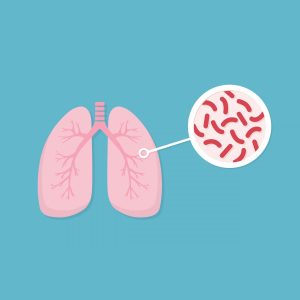Exploring the Mysteries of the Mind: Brain Activity During Daydreaming
Daydreaming, a common yet enigmatic phenomenon, is now closer to being understood thanks to groundbreaking research.
This intriguing study was led by a Harvard Medical School team. It provides unprecedented insights into the neural dynamics of the brain during these fleeting moments of daydreaming.
The study focuses on the visual cortex’s neuronal activity, has uncovered potential links between daydreaming and the brain’s ability to adapt and learn from visual experiences.
A Deep Dive into Visual Cortex Activity
The study involved observing mice while they were exposed to distinct checkerboard patterns. Researchers noted that the neurons in the visual cortex displayed specific firing patterns corresponding to each image. Interestingly, during moments of rest, these patterns would reappear, suggesting a form of daydreaming about the images.
The Significance of Daydreams in Learning and Memory
Nghia Nguyen and Mark Andermann, the driving forces behind this insightful study, emphasize the profound impact of daydreaming on cognitive processes. “We wanted to know how this daydreaming process occurred on a neurobiological level, and whether these moments of quiet reflection could be important for learning and memory,” Nguyen remarked, highlighting the study’s core inquiry.
Andermann further elaborates on the significance of their findings, “My lab became interested in whether we could record from enough neurons in the visual cortex to understand what exactly the mouse is remembering — and then connect that information to brain plasticity.” These statements highlight the study’s pivotal role in bridging the gap between daydreaming and memory formation.
Through meticulous observation, the research team discovered that daydreaming might facilitate the differentiation between visual experiences. This, in turn, could lead to more nuanced and specific responses to similar stimuli in the future. Nguyen adds insight into the practical implications of this phenomenon, noting that learning to differentiate between the images should help the mouse respond to each image with more specificity in the future.
The study, therefore, proposes a compelling hypothesis. Daydreams may not only be a passive occurrence but could actively contribute to the brain’s capacity for learning and memory. This revelation opens new pathways in understanding how our brains process, retain, and recall information.
Unravelling the Connection Between Daydreaming and Brain Plasticity
The groundbreaking study from Harvard Medical School delves into the intricate relationship between daydreaming and brain plasticity, revealing how these seemingly idle thoughts might actively shape our brain’s responses to future experiences. The researchers meticulously tracked the activity of neurons in the visual cortex of mice, noting that certain patterns of neural firing, reminiscent of those observed when the mice were shown images, reoccurred during periods of rest. This phenomenon suggests that the mice were engaging in a form of daydreaming about these images.
What stands out in this research is the discovery of a predictive element in these daydreams. “There’s drift in how the brain responds to the same image over time, and these early daydreams can predict where the drift is going,” explains senior author Mark Andermann. This drift, or “representational drift,” as neuroscientists call it, was not random but showed a tendency for the neural patterns associated with distinct images to diverge over time. Such divergence indicates that each image eventually activates a nearly unique set of neurons.
This evolving neural response is particularly intriguing. The patterns seen during a mouse’s initial daydreams about an image could foreshadow the brain’s later response to that image. This finding suggests that daydreaming might play a critical role in how our brains organize and reorganise sensory information – a key aspect of brain plasticity.
Furthermore, the synchronicity of these visual cortex daydreams with replay activity in the hippocampus hints at a complex communication between different brain regions during daydreaming. Such interactions could be instrumental in integrating new experiences with existing memories, thereby influencing how we learn and remember.
These insights provide tantalising evidence that daydreams, far from being mere flights of fancy, could be integral to the brain’s ability to remodel itself. These moments of quiet reflection could be crucial for learning and memory. This suggests that daydreaming is not just a passive activity, but an active participant in shaping our cognitive processes.
Implications for Human Brain Function
Although the study primarily involved mice, its findings have significant implications for understanding human brain function. The parallels drawn from this research suggest that similar neural activities could occur in humans during daydreaming. Preliminary evidence indicates that when humans recall visual imagery, it might activate comparable patterns in the visual cortex. This connection highlights the potential that daydreaming, often seen as a trivial or passive activity, is intricately linked to more complex cognitive processes in humans.
This research paves the way for further exploration into how daydreaming affects human cognition. Randy Buckner, the Sosland Family Professor of Psychology and of Neuroscience at Harvard University, has contributed to this field. He has demonstrated that brain activity in the visual cortex increases when people are asked to recall an image in detail. Other studies have also observed surges of electrical activity in both the visual cortex and the hippocampus during the recall of imagery, supporting the hypothesis that similar mechanisms of daydream-induced neural activity may be at play in humans as well.
The implications of these findings are far-reaching. They suggest that daydreaming could play a significant role in how we process, interpret, and remember visual information. Additionally, understanding these mechanisms could shed light on broader aspects of cognitive function, such as creativity, problem-solving, and memory consolidation.
As the body of evidence grows, it becomes clear that daydreaming may be more than a simple escape from reality. It could be a fundamental aspect of our cognitive toolkit, helping us to integrate past experiences with present contexts and future possibilities. The insights from this study encourage us to reconsider the value of daydreaming. Not only as a source of creative inspiration but also as a vital process in our cognitive and perceptual development.
References
- What happens in the brain while daydreaming? (2023, December 23). ScienceDaily. https://www.sciencedaily.com/releases/2023/12/231213112457.htm
- Nguyen, N. D., Lutas, A., Amsalem, O., Fernando, J., Ahn, A. Y. E., Hakim, R., Vergara, J., McMahon, J., Dimidschstein, J., Sabatini, B. L., & Andermann, M. L. (2023, December 13). Cortical reactivations predict future sensory responses. Nature. https://doi.org/10.1038/s41586-023-06810-1











